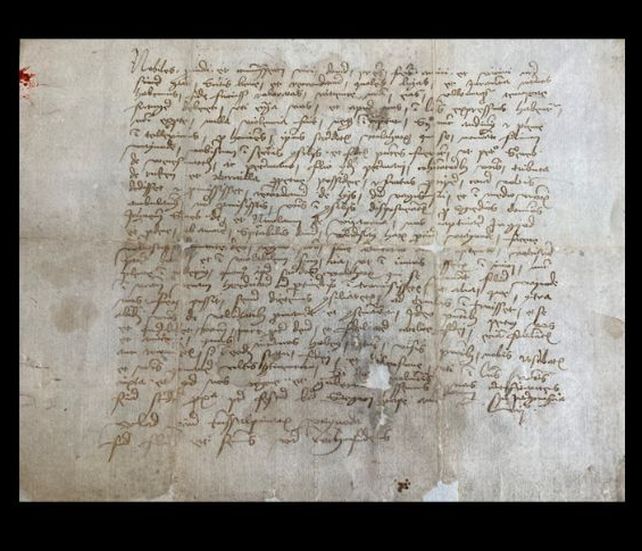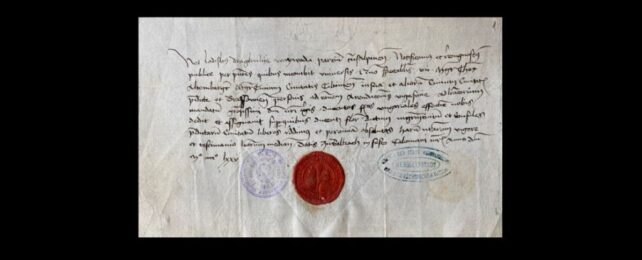A chemical analysis of the letters of the legendary historical figure reputed to have inspired fictional vampire Dracula has revealed Vlad Drăculea (aka Vlad the Impaler) may have cried tears of blood.
Traces left behind on the paper by the 15th century ruler of Wallachia suggest he was afflicted by a condition known as hemolacria, which manifests as the presence of blood in tears. And he may have had skin and respiratory conditions besides.
"To our reckoning," writes a team led by chemist Maria Gaetana Giovanna Pittalà of the University of Catania in Italy, "this is the first time such research has been carried out and has helped to bring to the limelight the health status of Vlad Dracula the Impaler."
Vlad Drăculea, also known as Vlad Țepeș, was certainly a towering figure in European history. His exploits as ruler of Wallachia are almost mythical; in particular, the extremely bloody lengths he went to in order to protect his land from multiple conflicts.

It's unknown how many deaths he is responsible for, but estimates put it at over 80,000 – and an estimated over 20,000 of those were impaled on wooden spikes. Not to mention all the other forms of torture of which he has been (disputedly) accused.
Although his life and deeds have been well documented, and in many cases no doubt exaggerated, there are some details that we are likely never to know. But Pittalà and her colleagues thought there may be a way to find out – by studying objects that Drăculea is known to have touched. Namely, letters the man himself penned.
Letters are an absolute treasure trove for historians. In this case, however, it was not the contents of Drăculea's letters that interested the researchers, but what secrets may have been left behind on the paper: the molecules and proteins that may have been transferred by human touch.
The letters are now over 500 years old, and extracting material from them could cause damage, which is not ideal for precious historical documents. But the recent development of a special film of ethylene-vinyl acetate, treated with ion exchangers and water-repelling resins, has been used to promising effect with ancient fabrics and papers.
When applied to any type of surface, this film is able to extract proteins and molecules without damaging the surface.

The team used these films on three of the Vlad Drăculea letters, one dated 1457, the other two 1475, and used mass spectrometry to analyze the results. They found thousands of peptides and proteins. They focused on signals of human biology; and, because many people have handled the letters over the centuries, only the human material with the most advanced degradation.
The results were certainly interesting. Two of the proteins the researchers found could indicate a genetic respiratory disorder that results in chronic lung and sinus infections. They also found peptides belonging to proteins associated with inflammatory processes. Put together, this suggests a skin or respiratory disorder – or perhaps both.
They also found peptides associated with proteins of the retina and tears, and also blood proteins. There were reports, the researchers assert, that Vlad Drăculea cried bloody tears; indeed, the concept has been popular in fictional depictions of Dracula. Although far from a smoking gun, this suggests that there may be some truth to that rumor.
"Altogether, proteomic data here reported, although cannot be considered exhaustive alone, might indicate that, according to some stories, he probably suffered, at least in the last years of his life, from a pathological condition called hemolacria, that is, he could shed tears admixed with blood," they write.

Setting rumor and Vlad Drăculea aside, the research is interesting for other reasons. The investigation of the three letters yielded thousands of peptides from bacteria, viruses, fungi, insects, and plants that offer a fascinating window into Wallachian life in the 15th century.
Most of the bacteria, for example, form a normal part of the human gut flora, but there were some that indicated intestinal or urinary tract infections. They also found peptides associated with Yersinia pestis – the cause of the black death.
Other molecules suggested the presence of fruit flies, tick- and mosquito-borne viruses, and the types of mold that grow on rotting fruit.
These results, the team says, offer promise for their techniques to be used on other ancient documents, revealing more about the inner workings of times long past.
The research has been published in Analytical Chemistry.
